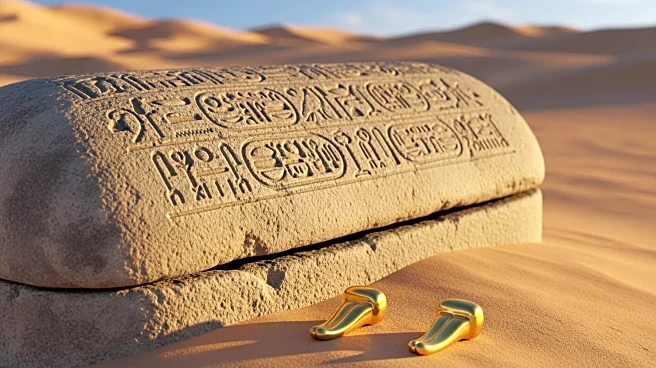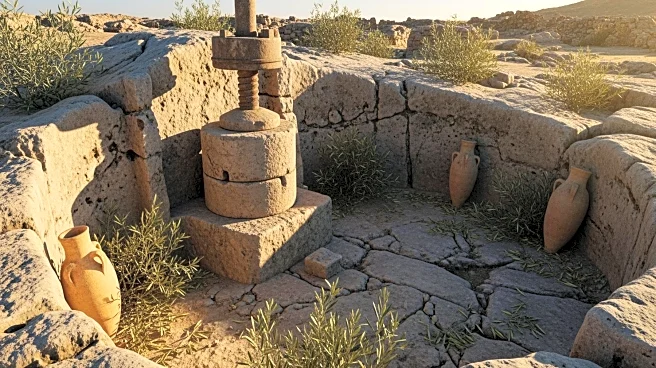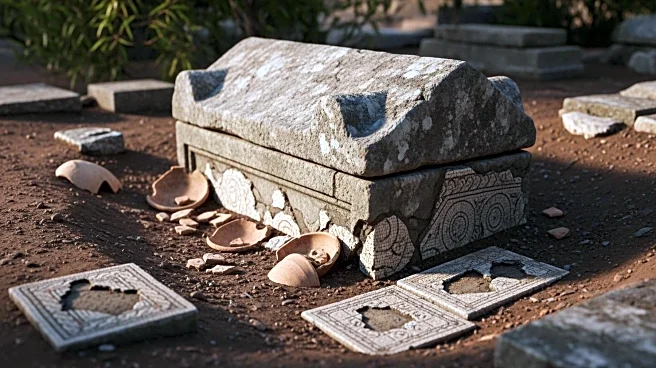What's Happening?
Archaeologists have made a significant discovery in Al-Bahansa, Egypt, unearthing tombs from the Greco-Roman period that are over 2,000 years old. These tombs contained 13 golden tongues and nails, alongside
mummies and coffins, providing new insights into ancient Egyptian burial customs. Gold was highly valued by the Egyptians, believed to be the flesh of the gods, symbolizing immortality and divine protection. The golden tongues were thought to enable the deceased to communicate with the gods, particularly Osiris, the god of the underworld. This discovery highlights the Egyptians' belief in the afterlife and the importance of gold in ensuring the deceased's preservation and protection.
Why It's Important?
This discovery sheds light on the intricate burial practices of ancient Egypt, emphasizing the cultural and religious significance of gold. The use of golden tongues and nails illustrates the Egyptians' deep-seated beliefs in the afterlife and the need for protection against evil forces. Such findings contribute to our understanding of ancient civilizations and their spiritual practices. The artifacts also underscore the Egyptians' craftsmanship and the lengths they went to ensure the deceased's safe passage to the afterlife. This discovery could lead to further archaeological exploration and research, potentially uncovering more about the Greco-Roman period in Egypt.
What's Next?
The discovery of these golden artifacts may prompt further archaeological investigations in the region, as experts seek to uncover more about the burial practices and beliefs of the Greco-Roman period in Egypt. Researchers may focus on analyzing the materials and techniques used in creating these artifacts, as well as exploring other tombs in the area for similar findings. The Egyptian Ministry of Tourism and Antiquities may also consider showcasing these artifacts in museums to educate the public about ancient Egyptian culture and history.
Beyond the Headlines
The use of gold in burial practices raises questions about the economic and social structures of ancient Egypt, particularly regarding the availability and distribution of gold. This discovery may lead to discussions about the trade networks and resource management of the time. Additionally, the combination of golden tongues and nails at this site suggests a unique cultural practice that may have been specific to certain regions or social classes. Understanding these practices can provide a deeper insight into the societal norms and values of ancient Egypt.












